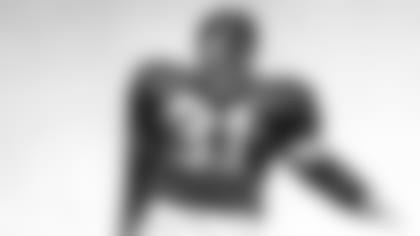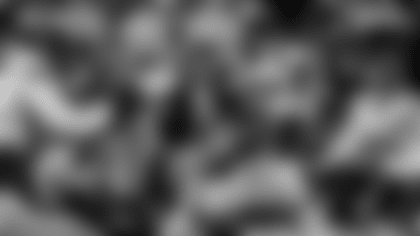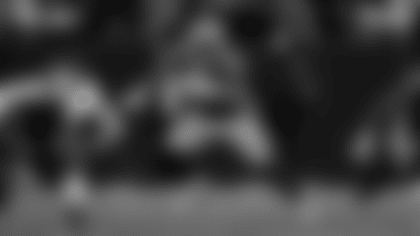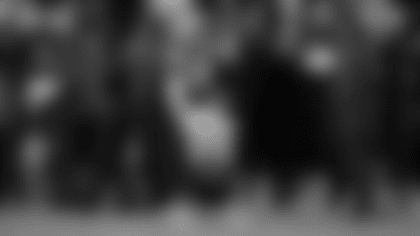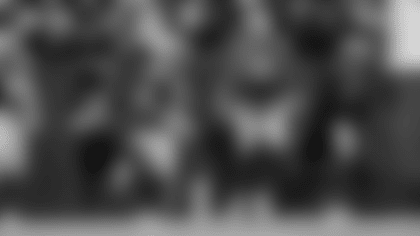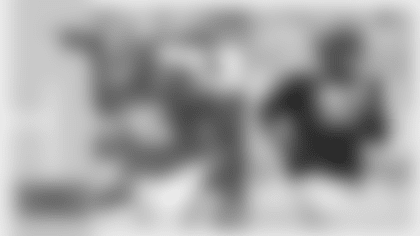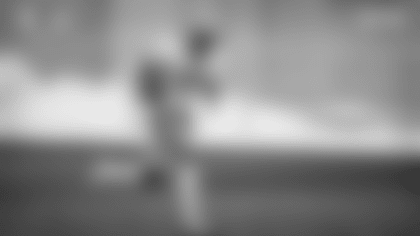*Cliff Christl started gathering oral histories with former Packers and others associated with the team in 2000 and will continue to gather them as Packers historian. Excerpts from those interviews will be periodically posted at *www.packers.com
Fred Cone played fullback and doubled as a kicker for the Packers from 1951-57. He also played for the Dallas Cowboys in 1960. He was inducted into the Packers Hall of Fame in 1974. The excerpts below were from interviews conducted with Cone in 2000, 2005 and last week.
On playing for the Packers during the dismal 1950s:
Cone: "It was wonderful. Believe it or not, even with the conditions – the equipment and everything we had was outdated. The jerseys were torn. You bought your own shoes. The team wasn't very good. In spite of that, we loved it. The people were so nice to all the players. They were great sports fans. For instance, when we'd come back on the train from Milwaukee there'd be so many cars at the station you could hardly find your own car. They would hardly let you get off the train, whether we won or lost. Later, we started flying and we'd come back to Austin Straubel Field and you could look out the plane and see all the cars lined all the way from downtown to the airport, even in those days. That was the amazing thing about Green Bay. You felt embarrassed usually because you lost. But the fans were fantastic. If I had to do it over, I'd do it the same way."
On Gene Ronzani, head coach from 1950-53:
Cone: "Ronzani was a good fella with a big heart, but as far as a football coach, he wasn't among the best. I'll put it that way. The playbook was constructed yourself. You got the plays at a team meeting and all the plays were diagrammed on a big card. He'd hold that big card up just long enough for you to diagram what you did at your position on that play. That took about a half-minute then he'd pull out the card and you'd look at the next play. You'd get maybe 30 plays at one team meeting, and all you had in your playbook was what you did. I think he was real suspicious of (George) Halas and that had been drilled into him."
On how Ronzani's paranoia affected preparation for the Packers-Bears game:
Cone: "When Ronzani was the coach, we'd practice before the Bears game at Bluejay Stadium (now Joannes Stadium). They had a board fence all the way around it and all the guys who were hurt, he'd make them stand in front of all the knotholes that people could possibly be looking through all the time we were practicing. He had played for Halas and thought Halas had spies everywhere."
On any memories of Ronzani and training camp in Grand Rapids, Minn.:
*Cone: *"I remember up at training camp, he'd have a bag of candy and would wear little white shorts. He didn't have the figure to wear white shorts. He had kind of a gut on him. While we were practicing, he'd go around and give the kids who were watching a little bag of candy. And we were out there working and it was like he didn't even see what we were doing."
On Hugh Devore and Scooter McLean, who were named interim co-head coaches when Ronzani was fired with two games remaining in the 1953 season:
Cone: "Scooter was a great guy and a good offensive coach, a good assistant coach. I think Devore was a good assistant. But neither one had the personality nor charisma a head coach has to have to get the respect of his team."
On Lisle Blackbourn, the Packers' head coach from 1954-'57:
Cone: "He was a better coach as far as the fundamental aspects of it. He did a better job and was a step in the right direction. But he had one quality that really hurt him. His method of correcting the players irritated you to the extent the players more or less just hated him. Remember Bill Howton? Bill nicknamed him, 'The Lizard.' That's not showing much respect for the head coach."
On Ronzani's and Blackbourn's staffs:
Cone: "The Packers had a top-notch personnel guy in Jack Vainisi. He brought in a lot of good players. And Scooter McLean was a good assistant coach. They had some good assistants: Lou Rymkus, Tom Hearden."
On the Packers' finances at the time:
Cone: "I didn't get any raises the whole time I was at Green Bay, maybe $300, $400 a year. Things were tight then. In the offseason, I worked for the Packers and Blackbourn. I was with him and his staff, and we'd travel all over Wisconsin trying to sell season tickets. We took diagrams of the (new) stadium. It was 1956 before the '57 season. They paid me my salary in 12-month increments. I didn't get anything extra. I just got paid through the offseason. The only thing was they weren't going to cut me. I had a contract that said they'd pay me if they released me. I worked with Tom Miller (sales promotional director). I'd go to the office every day and we'd plan out where we were going on the next trip to promote the (new) stadium."
On playing with Pro Football Hall of Famer Tony Canadeo during his last two seasons:
Cone: "The Galloping Ghost. Tony was like a 10-year guy and still pretty agile. He was full of spunk and vim and vinegar."
On receiver Bob Mann, the Packers' first African-American player:
Mann: "Great speed. Great pass-catching ability. He had great hands and moves. He was just a great receiver."
On Tobin Rote, Packers' second-round draft pick in 1950 and starting quarterback for most of the next seven years:
Cone: "He was a gutsy quarterback, probably as gutsy as I've ever seen."
On Babe Parilli, the Packers' No. 1 draft pick in 1952 who alternated with Rote his first two seasons and with Bart Starr in 1957 and '58:
Cone:"Babe was a fiery type guy. You couldn't get him to settle down. He'd get up under center and his hands were jerking he was so fired up. He still did a good job. Babe had great ability, and he was a real competitor. He could have played for anybody. He had a strong arm. He wanted to win. He had touch. Maybe the reason he would jump around back there was because the protection wasn't the greatest. I remember Babe would go back in the huddle when a team would red-dog (blitz) a lot and he'd say, 'Adjust your crash helmets. We're going to have another pass play.'"
Comparing Rote and Parilli:
Cone: "Believe it or not, I thought Babe was a better runner than Tobin. Tobin was taller, stronger and a tougher runner, but Babe had more agility. I think Tobin was a better passer. He seemed to settle down better. He could stand in the pocket and look over the tall guys better than Babe could and pick out the receivers better than Babe could. That made him a better passer. But Babe maybe had a little more zip on a pass than Tobin did. Babe just wasn't as big as Tobin."
Comparing Breezy Reid and Al Carmichael, starting halfbacks at times in the 1950s:
Cone: "Al Carmichael was a good running back. A hard-nosed player and a competitor. Compared to Breezy, Al had better moves and better speed. Breezy was maybe a little tougher than Al. (Breezy) was a fiery competitor. He was always a hustler. He could pick his holes, juke you a little bit. Both were good pro players."
On Howie Ferguson, starting fullback 1954-'58:
Cone: "He gave it all he could give. I don't think he had all the moves, but he was a strong runner. Good pass protector. He had just average speed. He was a different type runner. He didn't have great moves, but he was strong-legged. A lot of times that's just as good as having moves; if you could get hit and jerk away from them. And that's what Fergie could do."
On Roger Zatkoff, three-time Pro Bowl linebacker, 1954-'56:
Cone: "He was a hard-nosed guy. He'd stick his head into anything. He was kind of a wild man. He was a good player."
On Deral Teteak, a 5-10, 210 Pro Bowl linebacker in 1952:
Cone: "He was short and stocky, but he'd stick his head in there and stick them. He was a competitor. He probably gave as much pound-for-pound as any defensive guy we had."
On Dick Afflis, who played guard from 1951-'54 and then became famous as Dick The Bruiser, pro wrestler:
Cone:"He walked in through the revolving doors at the Northland Hotel (for the start of camp). He had a tan, camel's hair sport coat with extra padding in the shoulders. He was about my height, 5-11, and weighed about 270, which was big in those days. Anyway, he walked up to the counter and reached in his coat and pulled a .45 out of one side and then reached in the other side and pulled another one out. Then he said, 'Check these.' That was the beginning of Dick Afflis as far as we were concerned. He was that kind of character." On whether Afflis could have been more than a journeyman football player:
Cone:"He was strong, really strong. I don't think football-wise he was a 100 percent devout player. I think he could have been developed into a great player because physically he had everything you needed. Big and agile. Maybe if somebody like Lombardi had gotten a hold of him, he might have been a good player."
Today, Cone, 87, lives in Pickens, S.C



